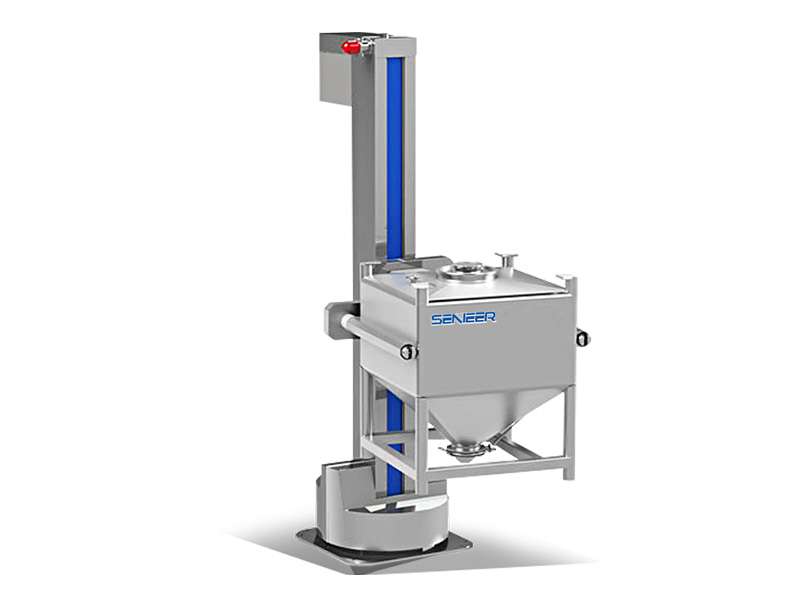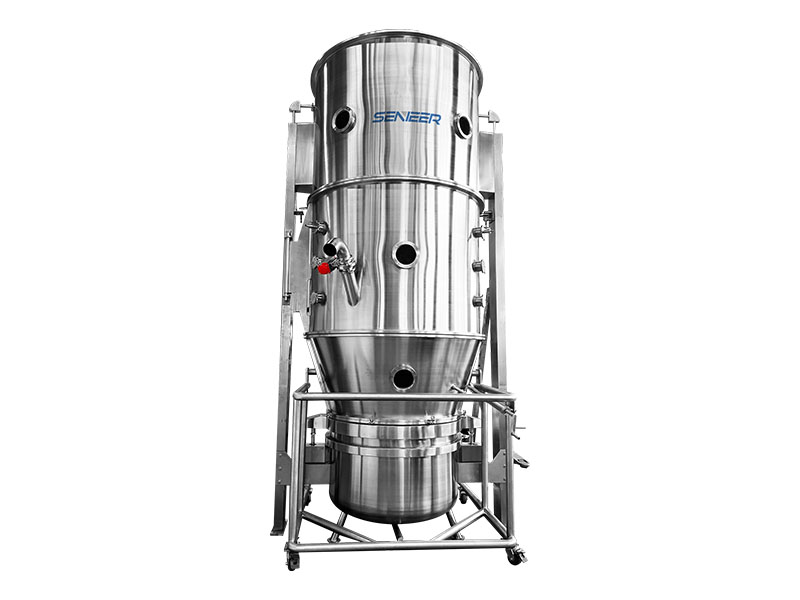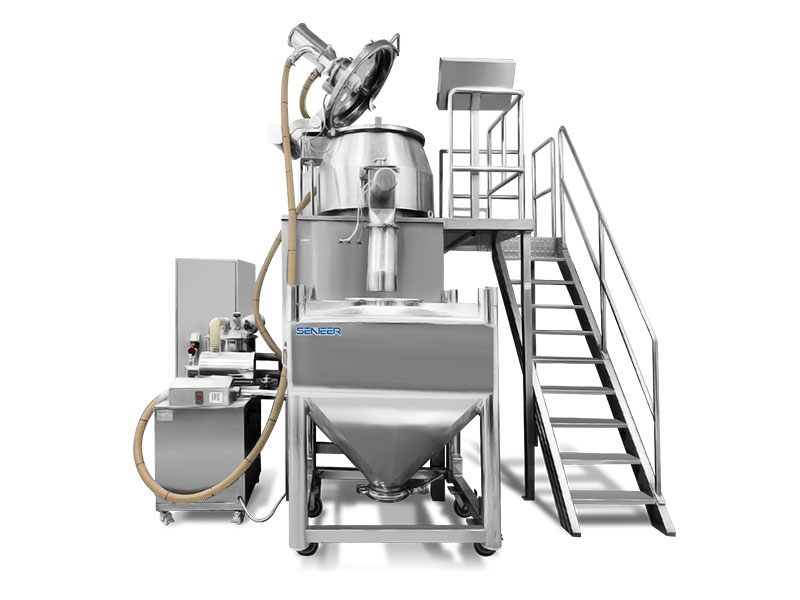Solid dispersion is one of the important strategies to improve the oral bioavailability of poorly soluble drugs. At present, more than ten oral preparations of poorly soluble drugs based on solid dispersions have been approved worldwide. In solid dispersions, drugs are mostly uniformly dispersed in polymer carriers in a disordered state or in the form of single molecules, that is, amorphous solid dispersions. Compared with crystalline drugs, the drug molecules in amorphous solid dispersions are in a high-energy state, and tend to spontaneously lower their energy levels and transition to low-energy crystalline states, resulting in phase separation of amorphous solid dispersions during storage. , recrystallization and other physical stability issues, which in turn reduces drug dissolution and oral bioavailability. The aforementioned physical stability issues severely limit the wide application of solid dispersions in improving the oral bioavailability of poorly soluble drugs.

In recent years, literature reviews have systematically stated that the physical stability of solid dispersions is related to factors such as glass transition temperature, compatibility of drugs and polymer carriers, molecular mobility, and solid solubility of drugs in polymers. In addition, some studies have shown that the preparation process is also one of the important factors affecting the physical stability of solid dispersions, but there are few relevant review reports. Therefore, the author of this paper discusses the influence mechanism of different solid dispersion preparation processes on its physical stability, which provides reference for the study of solid dispersions.
Part 1 Solid Dispersion Preparation Process
At present, the preparation process of solid dispersion in marketed drugs mainly includes melting method and solvent method, among which the melting method is mainly based on hot-melt extrusion technology, and the solvent method is mainly based on spray drying technology. The hot-melt extrusion technology is to mix the drug and the carrier material at the molecular level through physical actions such as heating and melting, shear mixing, etc., and form a “solid solution” after cooling, that is, an amorphous solid dispersion. Spray-drying technology destroys the crystal lattice structure of the drug by dissolving, and obtains an amorphous solid dispersion after drying to remove the solvent. In addition to the above two preparation processes, researchers have also reported processes such as grinding, supercritical fluid extraction, solvent evaporation, and spin coating. The solid dispersions prepared by the above-mentioned different processes have large differences in physical stability. This is due to the differences in the molecular interactions and physicochemical properties induced by different solid dispersion preparation processes, which lead to the degree of drug dispersion in the solid dispersion, The key factors affecting physical stability, such as the microscopic physical structure of solid dispersions and the degree of drug lattice disruption, vary.
Part 2 The Influence Of Solid Dispersion Preparation Process On Its Physical Stability
- 2.1 Effect Of Solid Dispersion Preparation Process On Its Microstructure
In an amorphous solid dispersion, the drug is uniformly dispersed in the polymer carrier in the form of a single molecule, and the drug molecule has a tendency to spontaneously transform into a low-energy crystalline drug in a high-energy level. This spontaneous process is based on the relaxation of the drug or carrier molecule ( relaxation) movement, including single-phase amorphous solid dispersion, drug-rich phase, drug molecular recrystallization and other processes. The physical stability of solid dispersions is usually evaluated by relaxation, which can provide information on molecular mobility in solid dispersions and reflect the microstructure of solid dispersions. Generally, the shorter the relaxation time, the higher the molecular mobility, ie the higher the molecular mobility, the faster the recrystallization rate. Molecular relaxation speed can be described or calculated by molecular relaxation time (molecular fluidity), such as Vogel-Tammann-Fulcher (VTF) equation: τ = τ0exp( DT0 /T-T0 ). Among them, τ represents the relaxation time, τ0 represents the time constant of 10-14 s, D represents the brittleness parameter related to the material, T represents the temperature of the system, and T0 represents the temperature when the molecular mobility is zero. This equation describes the relationship between molecular relaxation time and temperature, and the drug crystallization rate can be estimated based on the relaxation time.
In addition, the molecular relaxation process of an amorphous substance is closely related to the glass transition temperature (Tg) of the substance. When T>Tg, the relaxation time becomes shorter and the molecular migration rate increases, leading to an increase in the crystallization rate of the drug. At present, relaxation research has become a fast and effective method to predict the physical stability of amorphous solid dispersions, which can effectively guide the formulation design and preparation process selection.
Solid dispersions prepared by different processes have different relaxation behaviors and different recrystallization rates. Ke et al. used grinding method, melting method and spray drying method to prepare solid dispersions respectively, and studied the effects of different preparation methods on drug relaxation behavior and physical stability. The author uses differential scanning calorimetry to measure the relaxation enthalpy of samples at different aging times, and uses the Kohlrausch-Wil-liams-Watts { φ( t ) = exp [-( t /τ)β]} equation to fit the relaxation enthalpy , to obtain τ (relaxation time, relaxation time) and β (stretch power, stretching index, reflecting the distribution of independent relaxation states, 0<β≤1, the smaller β, the wider the distribution of relaxation states). Since τ and β are sensitive to experimental errors, it is easy to lead to inaccurate judgment of experimental results. In this study, the author used τβ (stretched relaxation time) to evaluate the relaxation behavior to reduce the influence of experimental errors on experimental results. The smaller the τβ value, the shorter the relaxation time, the higher the molecular mobility, and the more unstable the system. From the relaxation parameter τβ in Table 2, it can be seen that the relaxation time of the three solid dispersions in descending order is melting method > spray drying method > grinding method. Stability (room temperature, relative humidity 75%) experimental results show that the solid dispersion prepared by the grinding method recrystallizes when it is placed for 2 months; the solid dispersion prepared by the spray drying method recrystallizes when it is placed for 6 months ; However, the solid dispersion prepared by the melting method did not recrystallize when placed for 6 months. The study shows that the recrystallization rate of the drug in the solid dispersion is negatively correlated with the relaxation time, that is, the recrystallization rate of the drug in the solid dispersion is positively correlated with the molecular mobility of the system. Bhardwaj et al. reported the influence of different preparation processes based on solvent method (spray drying method, freeze drying method and natural drying method) on the physical stability of trehalose solid dispersion. The results also show that the recrystallization kinetics of the amorphous solid dispersion is closely related to the relaxation time, and the relaxation time of the solid dispersion prepared by the three preparation processes in descending order is: spray drying > freeze drying > natural drying; The crystallization rate is negatively correlated with the relaxation time, and the order from low to high is: spray drying method < freeze drying method < natural drying method. The above studies have shown that different solid dispersion preparation processes can significantly affect its relaxation behavior (molecular mobility), and then affect the recrystallization rate of solid dispersion.
In addition, the preparation process of solid dispersion can affect the proportion of drug crystallites, thereby affecting the physical stability. Karmwar et al. prepared solid dispersions by grinding, spray-drying, and melting methods, and placed the samples at -20°C (Tg) to observe the recrystallization of the samples. The results showed that the drug in the solid dispersion prepared by the grinding method was not completely transformed into an amorphous state, and there were still a small amount of microcrystals. The recrystallization rates of solid dispersions prepared by the three preparation processes are: grinding method > spray drying method > melting method. This shows that a small amount of drug microcrystals in the solid dispersion prepared by the grinding method become the power to promote the growth of crystal nuclei, and the physical stability is worse than other samples.
Another study shows that the process parameters of solid dispersion preparation also affect its initial drug crystal ratio, which in turn affects the physical stability. Liu et al. prepared indomethacin solid dispersion by hot-melt extrusion method, and studied the influence of extrusion temperature, rotational speed and other parameters on the properties of solid dispersion. The content of drug crystals in the solid dispersion was determined by differential scanning calorimetry. Under the extrusion conditions of 100°C/20r·min-1 and 110°C/20r·min-1, the proportion of drug crystals in the solid dispersion was 5 . 67% and 2. 51%. This shows that as the temperature increases, the proportion of crystalline drug decreases, the proportion of drug uniformly dispersed in the polymer carrier in the molten (amorphous) state increases, and the physical stability of the solid dispersion increases accordingly.
In summary, the preparation process of solid dispersion can affect its microstructure, such as relaxation behavior (molecular mobility), initial drug crystal ratio, and then affect its physical stability.
- 2.2 Effect Of Solid Dispersion Preparation Process On Its Macroscopic Morphology
The macroscopic morphology of solid dispersion mainly includes particle size, particle shape and particle surface morphology. The solid dispersions prepared by different processes have different macroscopic shapes. For example, the solid dispersion particles prepared by the spray drying method have a small particle size, a large specific surface area, a porous structure, and obvious aggregation of the particles. The solid dispersion prepared by the hot melt extrusion process (melt method) needs to be crushed by crushing or grinding, and the particle size and surface morphology depend on the downstream crushing process. Compared with the spray drying method, the solid dispersion prepared by the hot melt extrusion method has irregular particle shape, smooth surface, dense and non-porous structure after being pulverized. The above-mentioned differences in the macroscopic morphology of the solid dispersion can affect the properties of the solid dispersion such as hygroscopicity, Tg, and surface free energy, and then affect the physical stability.
The study found that the solid dispersions prepared by two different methods, hot melt extrusion and spray drying, had obvious differences in hygroscopicity and physical stability under high humidity conditions. Compared with the hot-melt extrusion method, the solid dispersion particles prepared by the spray drying method have a larger internal void ratio, and under high humidity conditions, the hygroscopicity is stronger, and the hygroscopicity is about that of the solid dispersion prepared by the hot-melt extrusion method. 2 times, poor physical stability.

Using the same solid dispersion preparation process, the particle size is different, and the physical stability is also different. Solid dispersions with different particle sizes were prepared by hot-melt extrusion, and there was no significant difference in Tg (63. 9~66. 8 ℃) among the particles. However, the smaller the particle size of the solid dispersion, the greater the surface energy, resulting in increased hygroscopicity of the particles and poorer physical stability.
In addition, the preparation process of solid dispersion can also affect its Tg, which in turn affects the physical stability. When the particle size of the solid dispersion is similar, the Tg of the solid dispersion prepared by the hot melt extrusion method is 63.9 ℃, which is significantly higher than that of the solid dispersion prepared by the spray drying method (Tg is 42.0 ℃), and the physical stability sex is better.
In addition to hot-melt extrusion and spray drying, other solid dispersion preparation processes can also affect their macroscopic morphology. Badens et al. studied the influence of supercritical fluid method and spray freeze-drying method on the particle morphology of solid dispersion. The specific surface area of the solid dispersion particles prepared by the spray freeze-drying method is much larger than that of the supercritical fluid method, and this difference in surface energy can significantly affect the physical stability. In addition, Adeli et al. used supercritical fluid method and solvent evaporation method to prepare solid dispersions. The results showed that the solid dispersion prepared by the supercritical fluid method was spherical particles with uniform particle size distribution; while the solid dispersion prepared by the solvent evaporation method was fine block particles with obvious aggregation. Since the solid dispersion prepared by the supercritical fluid method has a relatively compact structure, its crystallinity is smaller than that of the solvent evaporated sample, showing excellent in vitro dissolution and physical stability.
- 2.3 Effect Of Solid Dispersion Preparation Process On Its Water Content
Studies have shown that spray drying process parameters, such as spray drying temperature, liquid supply speed and drying air flow rate, can affect the water content of solid dispersion particles, thereby affecting the physical stability.
Maa et al. studied the effect of outlet temperature on the properties of solid dispersions during spray drying. The results showed that with the decrease of the outlet temperature, the shape of the solid dispersion particles changed from an irregular concave spherical shape to a smooth regular spherical shape, and the water content of the solid dispersion particles was also different (Table 3). Generally, the higher the water content of the solid dispersion, the faster the recrystallization rate of the drug.
In addition, Kojima et al. studied the influence of nitrogen flow rate and liquid supply rate on the physical stability of solid dispersion during spray drying. According to the research results of X-ray diffraction patterns, under different process parameters, all the drugs in the newly prepared solid dispersions were in the amorphous state; when the samples were sealed at 25°C for 7 months, the samples prepared with high nitrogen flow rate appeared tiny Diffraction peaks, that is, recrystallization; samples prepared with low nitrogen flow rate have no obvious diffraction peaks. The samples prepared at different pump speeds had no obvious diffraction peaks. The above results show that the nitrogen flow rate has a greater impact on the physical stability of the solid dispersion, while the liquid supply pump speed has a lesser impact.
- 2.4 The Effect Of Solid Dispersion Preparation Process On The Mixing Degree Of Drug And Polymer
Due to the different process principles, different preparation processes can significantly affect the degree of mixing between the drug and the carrier molecules, thereby affecting the phase distribution in the solid dispersion and the compatibility between the drug and the carrier molecules, resulting in different physical stability.
Yang et al. studied the influence of solvent method (rotary film coating method) and melting method (hot melt extrusion method) on the recrystallization of solid dispersion. The results showed that the solid dispersion prepared by the rotary film coating method had a lower recrystallization rate and better physical stability. The authors speculate that this result is due to the difference in the degree of mixing of the drug and the polymer carrier between the rotary evaporation technique and the hot-melt extrusion technique: compared with the hot-melt extrusion technique, for the rotary evaporation technique, the drug and the polymer are dissolved in The state exists in the solution system, the degree of mixing is higher, and its physical stability is also higher.

Ma et al. prepared solid dispersions with different drug loadings by co-precipitation and spray-drying methods, and analyzed the mixing degree of drugs and polymer carriers with near-infrared chemical imaging technology. The solid dispersion was prepared by co-precipitation method and spray drying method. When the drug loading was 20% and 35%, the drug was more uniformly distributed in the polymer carrier. When the drug loading is the same (especially 35%), the mixing degree of the drug and the polymer carrier in the solid dispersion prepared by the spray drying method is higher. It shows that the preparation process of solid dispersion can significantly affect the mixing degree of drug and polymer carrier, and then affect its physical stability.
Part 3 Conclusion
Solid dispersion can significantly improve the dissolution rate of poorly soluble drugs and improve their oral bioavailability. However, the drug in the solid dispersion is in an amorphous state, which is thermodynamically unstable compared with the crystalline state. Physical stability problems such as phase separation and recrystallization are common during storage, which eventually leads to a decrease in the dissolution rate and a decrease in bioavailability. This is also a limitation. One of the main reasons for the widespread use of solid dispersions. Therefore, when developing oral preparations based on solid dispersions, preparation process selection, process parameter optimization, and formulation composition optimization must be adopted to prevent drug recrystallization during the preparation and storage of the product. Among them, the preparation process is one of the important factors affecting the physical stability of solid dispersions. By studying the influence mechanism of different solid dispersion preparation processes on its physical stability, it can provide a basis for the selection of preparation processes. At present, the influence mechanism of the preparation process of solid dispersion on its physical stability is not completely clear, and further research is still needed in order to provide theoretical support for the wide application of solid dispersion.










